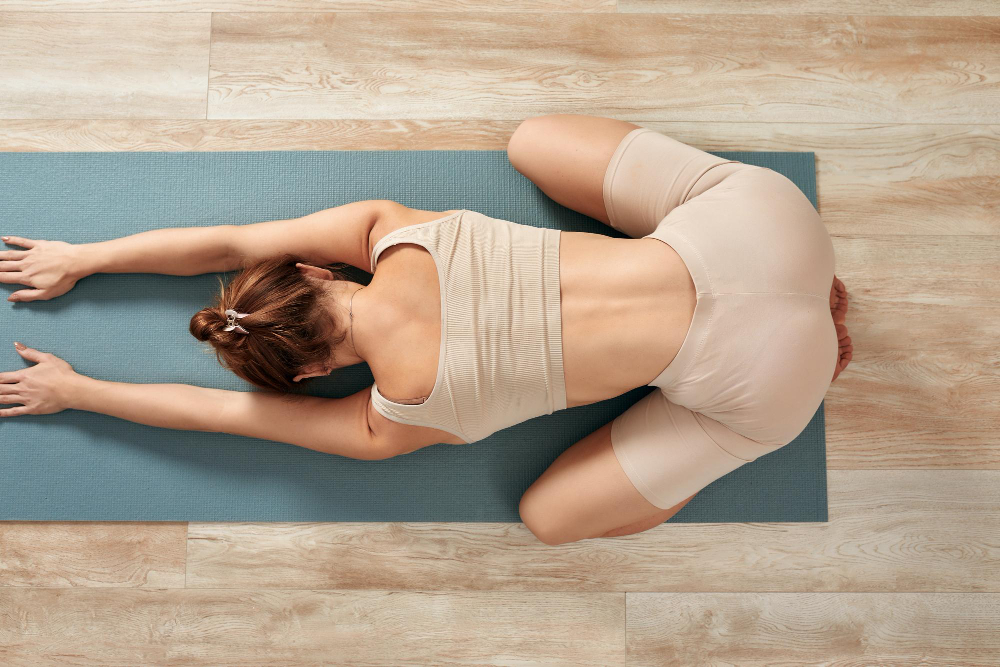How to Sync Exercises With Your Menstrual Cycle

Exercise isn’t just something we do because it’s good for us, we exercise because it makes us feel good! Except what about those days when exercising leaves us completely drained? Or our limbs feel like lead? Or we squat the same weight as last week, but today we end up with that dreaded leak of pee?
Our menstrual cycle and hormonal fluctuations can influence how we feel, physically and mentally, working out. Hormone levels can also affect how lax or responsive our pelvic floor muscles are!
So, with a special focus on the pelvic floor, let’s figure out how to optimize your exercise routine so it’s enjoyable and sustainable all month round!
Tailoring Your Exercise Routine to Your Menstrual Cycle
One of the best ways to create a sustainable and enjoyable exercise routine is to work with your body—not against it!
If you have a regular menstrual cycle, this guide will help you determine what exercises to do and when.
Day 1 to 5: The Menstrual Phase
Day one is the first day of your bleed, so take it easy! Your estrogen and progesterone levels are low, and your body is using a lot of resources to release and rebuild the womb lining—which means you may be feeling pretty fatigued.
It’s unclear whether exercise and physical performance are affected by menstruation, but in one study, over half of the participants reported that heavy menstrual bleeding impacted their athletic abilities. However, exercise has also been shown to reduce period pain! So to exercise or not during your period?!
My advice? Gentle movement! Trade your jog for a stroll or some yoga, and try a slow pilates class instead of lifting weights.
Day 6 to 12: The Follicular Phase
Estrogen is rising, and you feel good! Not only do you have more energy, but whilst estrogen is peaking, your muscles are at their strongest, collagen synthesis is optimized, and you’re feeling limber!
Embrace your favorite type of exercise, or if you want to start an exercise routine or try something new, make the most of the build-up of estrogen and FSH during this two-week period to gently increase your limits.
Strength training is excellent for bone health, so add some weight-bearing exercises, particularly if you’re approaching menopause.
Day 13 to 15: Ovulation
Keep on training, you’re at your peak!
Day 16 to 28: The Luteal Phase
Ah. You were feeling so good… but as each day passes, you’re a little stiffer? Less energized? Less motivated? Goodbye estrogen, hello progesterone. But the trick to maintaining an exercise routine during this time is to embrace the change!
Focus on slow but steady exercises, such as lifting weights, reformer pilates, or a power yoga class. Trade out your runs for a hike.
How Do Hormonal Changes Affect Your Pelvic Floor?
Your pelvic floor is a muscle group, so an exercise routine doesn’t just need to focus on heart health and muscle strength, but you can sync up your routine to support and train your pelvic floor.

If you have weak, lax, or dysfunctional pelvic floor muscles or have a prolapse, you may find that your pelvic floor feels most supportive during the follicular phase and ovulation. Because of increased estrogen, it may feel stronger, engage better, and you experience less tightness and pain. It’s a great time to retrain your pelvic floor muscles too.
On the flip side, during the second half of your cycle, your muscles can become more fatigued and less responsive. To support your pelvic floor health, you may want to engage in gentler exercises and emphasize maintaining, not building, pelvic floor strength.
If you have a lot of pelvic pain or weakness, it’s important a medical professional assesses you before you start a new exercise routine. Working with a Women’s Health PT can help ensure your chosen exercises support your body’s unique needs.
The Pelvic Floor and Painful Periods
If you have painful periods (primary dysmenorrhea) and experience a lot of cramping, the pelvic floor muscles may be chronically tight.
In the build-up to and during your period, focus on exercises that fully relax the pelvic floor. A Women’s Health PT can help assess if your pelvic floor muscles are contributing to period pain and teach you how to do Kegels in a way that supports your body best. Physiotherapy intended to treat painful periods has been shown to reduce pain and symptoms. Myofascial release therapy can be a great support for this too.
Looking for professional guidance on developing a sustainable exercise habit that supports your pelvic health? I’d love to hear from you! Make an appointment with Sylvie today!
–
Author: Sylvie Le, DPT, PYTC
